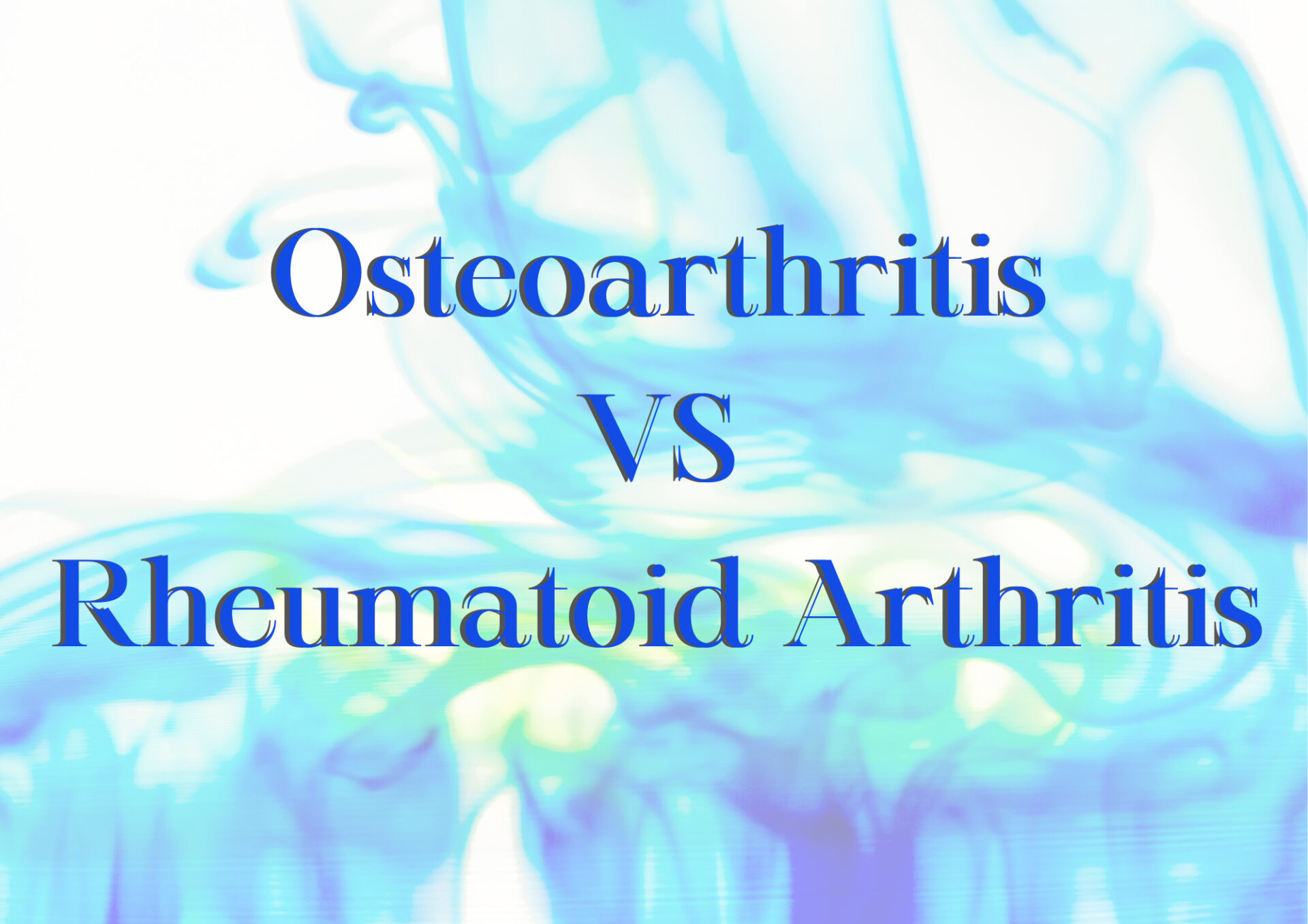Understanding the Difference Between Osteoarthritis and Rheumatoid Arthritis Symptoms
Contents
- 1 Understanding the Difference Between Osteoarthritis and Rheumatoid Arthritis Symptoms
Read DISCLAIMER
Discover the key differences between osteoarthritis and rheumatoid arthritis symptoms. Learn how to identify these conditions, explore treatment options, and improve your quality of life.
Introduction

Arthritis is a group of diseases that all share the symptoms of joint inflammation and stiffness. Two of the most common types of arthritis are rheumatoid arthritis and osteoarthritis. Although they share certain characteristics, their causes, symptoms, and treatments differ greatly. In this comprehensive lesson, we’ll look at the key differences between osteoarthritis and rheumatoid arthritis symptoms to help you better comprehend both conditions.
Osteoarthritis vs. Rheumatoid Arthritis: An Overview
The quality of life can be significantly impacted by the chronic joint illnesses rheumatoid arthritis (RA) and osteoarthritis (OA). These can affect anyone of any age, however OA is more common in the elderly whereas RA can affect anybody at any time.
Osteoarthritis
Osteoarthritis is primarily a degenerative joint ailment and is sometimes referred to as “wear and tear” arthritis. It appears as the protective cartilage that cushions the ends of your bones slowly deteriorates. The primary characteristics of OA are as follows:
– Localized Pain: OA often impacts a few joints, including the spine, hands, hips, and knees. Pain frequently just affects the injured joint.
– Joint stiffness: After being inactive for a while or in the morning, stiffness is often at its worst.
– Reduced Range of Motion: As the disease worsens, you can notice that the afflicted joint has less range of motion.
– Bony Spurs: The joint may over time develop bony spurs that can be seen on X-rays.
Rheumatoid Arthritis
Rheumatoid arthritis is an autoimmune disease in which the body’s immune system mistakenly attacks the synovium, the lining of the membranes that surround the joints. Principal characteristics of RA include:
– Symmetrical Joint Pain: The same joint on both sides of the body is frequently affected by RA. For instance, if the left wrist is damaged, it is likely that the right wrist will be as well.
– Systemic symptoms: In contrast to OA, RA can result in systemic symptoms such tiredness, fever, and appetite loss.
– Swelling and Inflammation: Due to inflammation, affected joints swell and feel warm to the touch.
– Joint Deformity: Because RA erodes bone and cartilage, it can cause joint abnormalities if ignored.
Differentiating Symptoms
Now that we’ve provided an overview of both OA and RA, let’s delve deeper into the distinctive symptoms of each condition.
Osteoarthritis Symptoms
– Pain: In OA, the afflicted joint often has localized pain that usually becomes worse with exercise. Relief typically comes through rest.
– Morning stiffness is common, but it usually only lasts for a few minutes.
– Cracking and Grating: As OA worsens, you could feel like something is cracking or grating inside the joint.
– Limited Range of Motion: OA may eventually cause a reduction in range of motion.
Rheumatoid Arthritis Symptoms
– Symmetrical Pain: Pain in RA typically affects the same joint on both sides of the body.
– Swelling and Warmth: RA causes joint swelling and warmth due to inflammation.
– Morning Stiffness: Morning stiffness in RA can be more prolonged, lasting for hours.
– Systemic Symptoms: RA can cause fatigue, fever, and weight loss.
– Joint Deformity: If left untreated, RA can lead to joint deformities and erosion.
Treatment Approaches
The treatment for OA and RA varies significantly due to their different underlying causes.
Osteoarthritis Treatment
– Medications: Pain relievers, anti-inflammatory drugs, and topical creams can help manage symptoms.
– Physical Therapy: Physical therapy can improve joint function and reduce pain.
– Lifestyle Changes: Weight management and exercise can alleviate stress on affected joints.
– Joint Injections: Corticosteroid or hyaluronic acid injections may provide relief.
Rheumatoid Arthritis Treatment
– Disease-Modifying Antirheumatic Drugs (DMARDs): These drugs help slow the progression of RA by suppressing the immune system.
– Biologic Response Modifiers: Biologics target specific aspects of the immune system.
– Pain Management: Nonsteroidal anti-inflammatory drugs (NSAIDs) can help with pain and inflammation.
– Physical and Occupational Therapy: These therapies can improve joint function and teach adaptive strategies.
read more posts
Conclusion
In conclusion, understanding the differences between osteoarthritis and rheumatoid arthritis symptoms is critical for anyone who may be feeling joint pain or wish to support loved ones dealing with these conditions. Osteoarthritis is a long-term disorder that causes joint deterioration, localized pain, and stiffness. Rheumatoid arthritis is an autoimmune illness that causes symmetrical pain, inflammation, and systemic symptoms as a result of the immune system’s erroneous attacks on the synovium. Based on these distinctions, the proper management and treatment techniques must be selected.
While osteoarthritis typically responds favorably to medications, physical therapy, and lifestyle changes, rheumatoid arthritis need a more comprehensive approach that includes DMARDs, biologics, and other treatments.
By being aware of these variations, people and healthcare professionals may modify therapy to meet specific needs and improve the quality of life for individuals with arthritis. Remember that prompt diagnosis and treatment are crucial for effective management.
read more posts
FAQs with Answers
Q1: Are there any lifestyle changes I can make to manage osteoarthritis symptoms?
A1: Yes, maintaining a healthy weight, engaging in low-impact exercise, and protecting your joints can help alleviate osteoarthritis pain.
Q2: Can rheumatoid arthritis affect organs other than joints?
A2: Yes, rheumatoid arthritis can lead to complications affecting the heart, lungs, eyes, and skin. It’s essential to monitor your overall health if you have RA.
Q3: Is there a cure for either osteoarthritis or rheumatoid arthritis?
A3: Unfortunately, there is no cure for these conditions, but with proper management, symptoms can be controlled and quality of life improved.
Q4: Can young people get osteoarthritis?
A4: While it’s more common in older individuals, young people can develop osteoarthritis, especially if they’ve had joint injuries or overused their joints.
read more posts

Hi there would you mind letting me know which web host you’re using?
I’ve loaded your blog in 3 completely different internet browsers and I must say this blog
loads a lot faster then most. Can you recommend a good hosting provider at a honest price?
Thanks a lot, I appreciate it!
Thanks for checking out our latest content! Your continued support inspires us.
Your time is truly valued, and we’re honored to have connected with you. Thank you so much!
Thanks for sharing. I read many of your blog posts, cool, your blog is very good.
Thank you for your sharing. I am worried that I lack creative ideas. It is your article that makes me full of hope. Thank you. But, I have a question, can you help me?